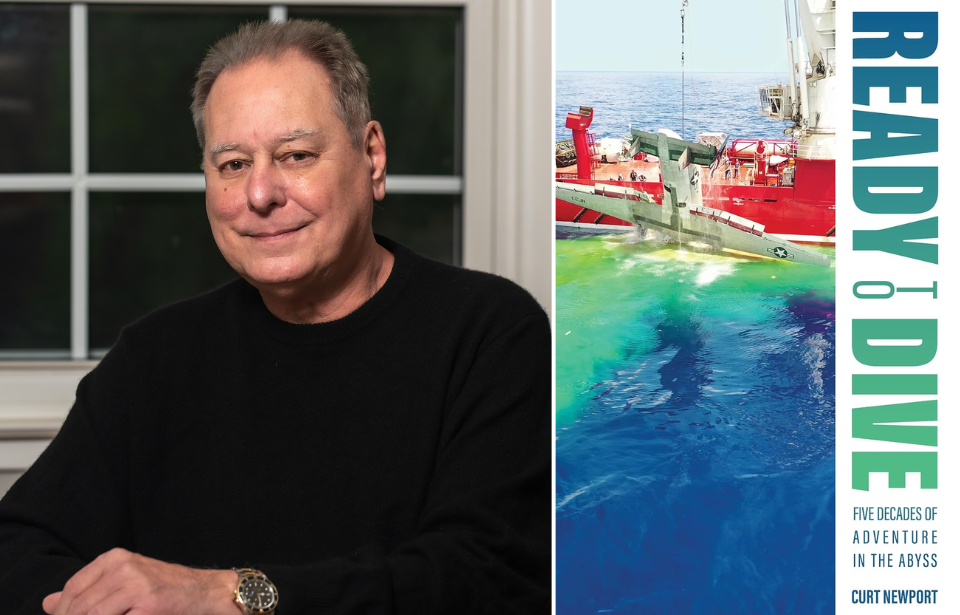Curt Newport is an underwater salvage expert with decades of experiencing. Along with exploring the likes of the RMS Titanic, he was also involved in operations following the loss of Air India Flight 182 and the Challenger Space Shuttle disaster – he even took part is two searches for the lost World War II-era heavy cruiser, USS Indianapolis (CA-35).
War History Online was recently able to speak with Curt about his career and his new book, Ready to Dive: Five Decades of Adventure in the Abyss, which is available now.
Can you provide a background about yourself; how did you get involved in ocean exploration?
Newport: I was always interested in underwater exploration. As a youth, I used to design my own submarines and underwater breathing apparatuses and stuff like that, but I never really pursued it until I saw an ad in The Washington Post for a company called Ocean Systems Inc. (OSI) in Chantilly, Virginia, [which was] looking for diving systems technicians.
I went down there [and] got the job. At that point, OSI moved their facility to Houston, [and I] work there for a while. [I] wasn’t making much money, so I left and went to a commercial diving center and started training on air and mixed-gas diving. As soon as I graduated, I was hired back [at] Ocean Systems to be part of the first remotely operated vehicle (ROV) team. So I started off with ROVs, mostly doing oilfield work [and] submarine cable work for telecommunications companies.
When I started working for Eastport International, they had the contract with the [US] Navy – there was a search contract [and] there was recovery contract. Eastport International, or, previously, Ocean Search, had to contract to do salvage, so it was just a function of who I was working for – I was assigned to that particular Navy contract. So that’s kind of how I moved into the deep ocean search for recovery business.
Eastport was later sold to Oceaneering International, and I worked for them for a while. Then Phoenix International won the contract, [and] I actually worked for them for about 20 years.
How have you found it working with a military entity like the US Navy, versus more commercial companies?
Newport: There seems to be a lot more bureaucracy involved with the Navy stuff, especially as far as where the money comes from. In commercial jobs, you’re dealing with companies who are hiring you to do certain jobs, so it’s pretty straightforward.
[With] the government, well, you gotta rely on funding, and funding that is allocated for certain programs; it’s just a little more complicated, and the Navy dictates that certain projects be done. You get [a] budget, and a little pile of money and another little pile of money. It kind of works out, it just takes longer.
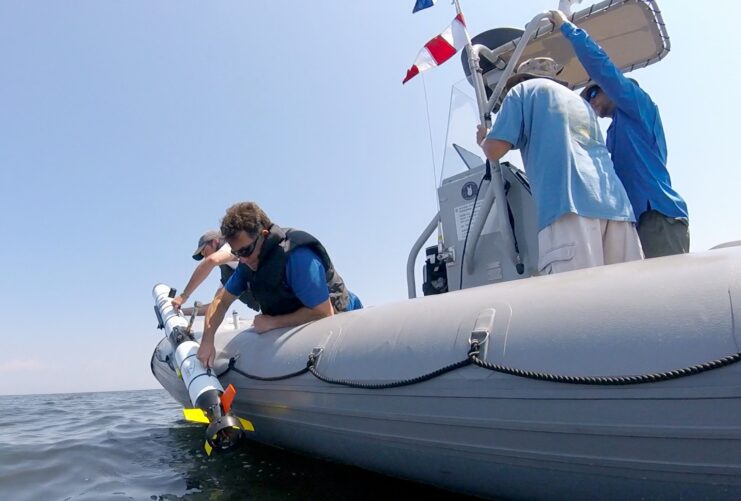
In your book, you discuss your work related to the Challenger Space Shuttle. What was going through your head during your part of the search, and how did it feel when the piece you were looking for was located?
Newport: Eastport International called me and asked me to come down. The work involved the recovery of the solid rocket motors. We had a lot of heavy lift gear. It was a good ship for that kind of operation – I think there were 50-ton cranes on the stern.
We went out and tested our procedures in shallow waters on a piece for the lefthand booster, which was in about 600 feet of water, and that worked okay. Then we moved into the deeper waters and started scouring through the debris field, which had components from the righthand [booster].
The problem was there was a lot of little rumors and stuff going around, and I had never dealt with booster wreckage that still had propellant on it. They were saying, “Well, when you pull it out of the water, it might burst spontaneously.” That turned out not to be true. We would have this booster wreckage just laid on the ship and they told us that “if one piece caught fire, it would basically sink the ship; it would just burn right through the ship.”
We would go down and investigate targets. NASA would give us procedures for each particular target, which we threw out the window and just did it the way we wanted to do it, which worked. They had developed a special tool, which would allow us to attach lift lines to the pin holes on the booster wreckage, but it didn’t work. The tolerances were way too close, so we made our own tool.
When we recovered the first actual piece of wreckage that showed evidence of what had happened, it was just terrible.
For me, personally, it was a terrible job. The lights of our underwater vehicle would always attract all the fish. We couldn’t see what we were doing, so much [so] that I would turn off all the lights in front of the vehicle, turn on the lights in the rear of the vehicle and the fish would go around to the rear. Then I would turn on the front lights. We’d worked for a while until the fish figured out there were more lights on the front of the vehicle. So it was kind of a back and forth arrangement.
We recovered that particular piece. As I said, it wasn’t a good dive for me. I banged one of the manipulators into the piece of wreckage and had hydraulic issues. So I came up, went to bed and the next morning when I came down they said, “Look at this piece of wreckage. It looks a little bit different.” Surely enough, you could see a section of it where it was fractured. It had been melted and burned through.
Soon after that, I developed a bad case of strep throat [and] had to get evacuated to the beach to get well. When I came back, we recovered the other half of that joint where, again, you could see an area that was melted through. So those were the two critical pieces they were looking for.
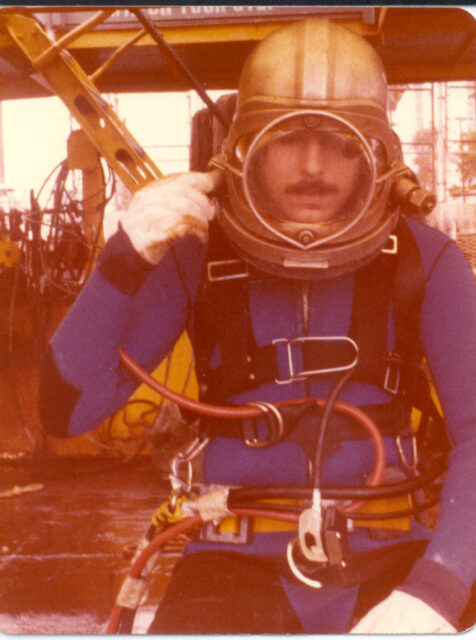
You’ve mentioned using remotely operated vehicles (ROVs). What is it like operating them?
Newport: There’s pluses and minuses to them. The plus is you’re not putting anybody into the water and, assuming the vehicle works properly, you can stay down for a long time. When we were salvaging Air India Flight 182, we had the vehicle down on the bottom for five days. You can’t do that with a manned submersible.
But they do bring to the table some limitations, because you don’t have the situational awareness around you with the multiple cameras that you might on a manned submersible. I’ve been in both, but what you can do with a manned submersible you can probably do with a remote vehicle. It would just potentially take longer.
You also mention in your book that you were heavily involved two searches for the USS Indianapolis. What made you want to get involved, and how did it feel to receive the message that the ship had been found?
Newport: The problem with the location that was official from the Navy [was] there was no pedigree to it. We didn’t know where it came from [or] how it was created.I assumed that it was something that was created after the fact by Charles McVay after the ship was sunk, when he was on the USS Conway (DD-507), or maybe it was the USS Cecil J. Doyle (DE-368). Well, that location was off by over 30 miles.
In our first search of the ship in 2000, we didn’t locate it, and the terrain was a very unexplored area; that area at that time had been unexplored. We didn’t know what [it] was like. We didn’t know anything.
Later on, I was hired as a consultant by Paul Allen to work with his Vulcan Group to do another search in 2017. The thing about Indianapolis is, to be able to find it, you pretty much need unlimited funds because it’s gonna be a big search area, it’s gonna be really expensive [and] it’s going to take a long time. Paul Allen was pretty much willing to spend as much money as it took to find that ship, and that’s really what it needed.
I wasn’t there when they actually found it. I had a contract that specified I could only be paid so much money with them. I was on the first phase of a service for about six weeks, and I came home and I got an email from a friend at Vulcan that said, “Found it! Found it! Found it!” They’d found the ship, and it was in amazing condition. There was no doubt that was the ship. It was maybe within about 10 miles of my best guess.
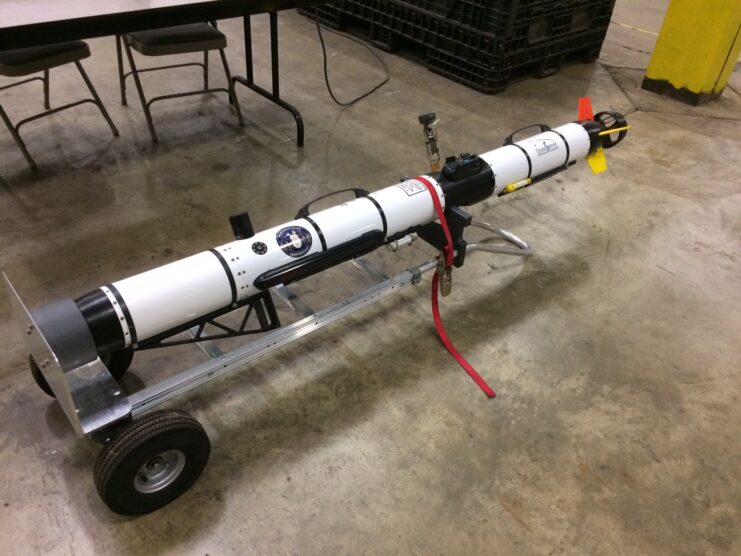
You’ve also spent some time investigating the wreck of the RMS Titanic. Could you elaborate on that?
Newport: MSNBC had hired Oceaneering to do a live video broadcast on Titanic, just for a live show that they had planned. So I was part of the team with the Magellan 725 ROV to go out.
They already knew where it was, so we went up there. I was driving the Magellan, and we go down to the bottom and we’re going through what is obviously a debris field. What was funny at first, I found a couple of really nice artifacts, like a plate and a cup or something like that. We were going to come back up, so we grabbed onto them and brought them up to the surface, and they all freaked out and said, “No, we’re not ready for that yet.” So we dropped them and they went back to the bottom.
Later on, I was driving the Magellan around and came up and saw basically this huge steel wall. It was pretty cool. Went up there, flew around for a while. Then we had an MSNBC television producer – because they had like a whole 40-foot long production ship – he said, “Well, I want to get this really cool shot from the bow.” [He] tells me to go to the bow of the ship and just fly up right on the knife’s edge of the bow, like really close and really fast.
I’m like alright, so I went over there [and] got the vehicle positioned. I did it a few times, and every time he came back and said, “Well, that’s too slow or you’re too far away.” He was having problems with it.
Finally, I got kind of frustrated. We had this high resolution camera on the front of the vehicle. It was put together, and it actually stuck out from the front of the vehicle. [It] had this really expensive lens in the front, like $40,000. I put the vehicle on the bow, came up really close and really fast. I was coming up the top [and there was] a towing shackle on the bow of Titanic. I actually just sort of brushed it, and you could see all these little flakes of whatever debris came off it.
I got his shot. You could see the the anchor, the bow of the ship and the railing – it was a great shot. They used that for a lot of promos for the program. Beyond that, it was just regular diving on the ship. If I was doing a photo run, I would start out around the bow, run down the starboard rail [and] cut across to the collapsed mask. I would flying up the mast to where they used to steer the ship from, rotate around that [and] go over to the starboard lifeboat to have it.
It was pretty good playground for somebody running an ROV.

Back to the book, what made you want to revisit these jobs?
Newport: I’ve been working on a book for a long time. In fact, there were sections of the book that were written 30 years ago.
I was just writing parts; a lot of times when I got off particular operations, like Air India or Challenger, I would go home and I would write stuff up about what I remembered. I also generally tried to keep a daily log on every operation I was on. That was always in line [with] writing a book.
The whole purpose of the book was to record what happened on particular operations I was involved with over several decades and really tell a lot about my life, how I grew up, about my family and my father, and how I got into the business and a bunch of other things that I did for a while.
It was really an attempt to create a backstory to all of these operations; just to document what actually happened on those jobs, because nobody’s ever written about [them]. I mean, there’s stuff written about Challenger, but not by anybody who was there, and nothing has been written about Air India flight 182 and that’s still the worst air disaster at sea.
So it was just a matter of getting some sort of record down, so that there was a record of it and people could read about.
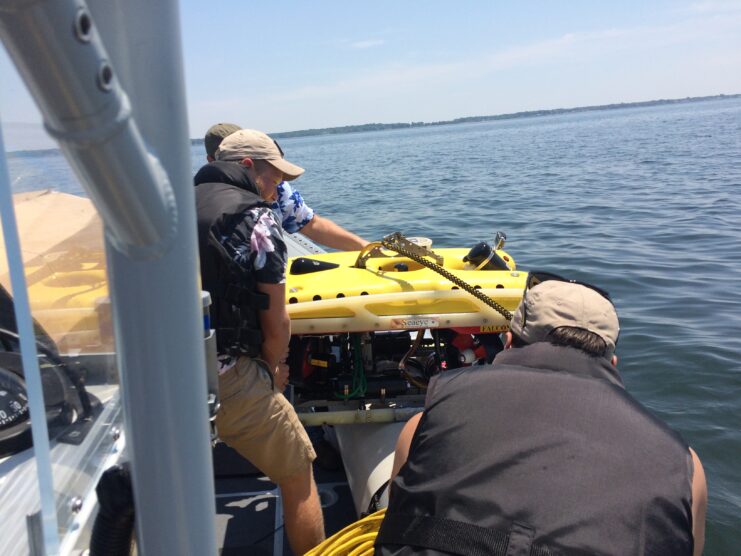
You’ve been involved in a lot of operations, but is there one search you’d like to go on before you die?
Newport: See, all that stuff costs money. I actually figured out a way to hire the RV Petrel. It’s almost $70,000 a day, so it ain’t cheap.
I suppose it would have been pretty cool to find Amelia Earhart‘s airplane, but I think someone might have already done that. There’s a group that’s been out there, and I’ve looked at the records. There’s a good shot that they’ve found it.
That would be the only thing.
More from us: INTERVIEW: Dr. Marshall Poe on the Mỹ Lai Massacre and Its Impact on Vietnam-Era America
I’ve spent enough years at sea. I’m old enough that I don’t need to go out on a ship anymore because they’re really uncomfortable and [the] food’s not very good. The beds aren’t very good. I didn’t really like ships very much. I didn’t like the idea of being out on a ship, not being home, but that was kind of what you had to do to do this type of work. I put up with it, I guess you could say.
